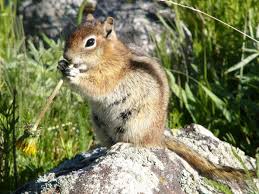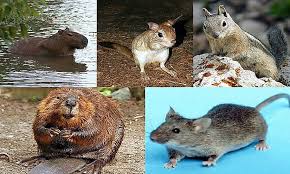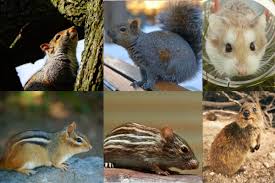Rodents represent the largest order of Nigerian mammals, with nine families, 37 genera, and 55 species. Their identification is mainly based on their dental structure and the unique characteristics of their teeth. Rodents display a variety of body sizes, colors, tail lengths, limb structures, and hair textures. They can be found in almost all habitats, often in large numbers.
Rodent Dentition and Identification Features
Rodents’ teeth follow a distinct dental formula, as outlined below:
1 0 0 3 ─ 1 0 2 3
1 0 1 3
The rodent’s dental structure includes two chisel-like upper and lower incisors, specialized for gnawing and biting, which grow and wear down throughout the animal’s life. Behind these incisors, a gap (diastema) exists due to the absence of canine teeth.
The cheek teeth, located at the back of the mouth, are used for grinding and chewing, with their number varying across species, aiding identification. Jaw musculature and the shape of the zygomatic arch further help in distinguishing the three main rodent groups: Sciuromorpha (squirrels, beavers, marmots), Caviomorpha (guinea pigs, including porcupines), and Myomorpha (mice and rats) (Happold, 1987).
Read Also: Apple Maggot: Description, Damages Caused, Control and Preventive Measures
Rodent Diversity and Habitat Distribution

Rodents range in size from the tiny pygmy mouse (weighing around 10g) to the large crested porcupine (Hystrix cristata), which weighs between 15–20 kg. There is a significant variation in external appearance, including color, tail length, and limb structure, among different families and species.
They inhabit diverse environments, from the rainforests of the South to the semi-arid regions in the North. Most rodents are ground-dwelling, though some live in trees, and one species, such as the giant rat, is fossorial.
Although none are truly aquatic, some species prefer swampy environments. Rodents are prolific and widespread, but their total biomass is relatively small compared to larger herbivores like the kob (Happold, 1987).
Importance and Ecological Role of Rodents
Rodents play an important ecological role, consuming seeds, grasses, and insects. They are also a significant food source for many predators, both aerial and terrestrial.
Certain rodent species are vital to humans, some of them becoming agricultural pests (e.g., the multimammate mouse, Nile rat, and savannah gerbil), while others, like the Gambian giant rat (Cricetomys gambianus) and the greater cane rat (Thryonomys swinderianus), are valued for their meat.
Additionally, some rodents are potential carriers of human diseases, such as the black rat and Norway rat (Happold, 1987).
Key Characteristics of Rodents in Nigeria

Rodents are characterized by their one pair of upper incisors, small ears held close to the head, and small eyes. Their tails can vary in length, with some species having tufts of hair at the tips. They exhibit various forms of movement, such as scampering, trotting, climbing, and jumping. Most rodents live on the ground or in trees, and some burrow underground (Happold, 1987).
Family Classification of Rodentia in Nigeria
1. Hystricidae: Rodents with spiny hairs on the upper body.
2. Bathyergidae: Specialized for fossorial life, with reduced tails, small eyes, and large forward-projecting incisors.
3. Anomaluridae: Possess a patagium, enabling gliding.
4. Sciuridae: Includes medium to large rodents with brown or rufous fur, such as squirrels.
5. Cricetidae and Muridae: Small to medium rodents with variable tail lengths, often up to 60% of the body length, excluding species like Steatomys.
Glossary of Terms for Rodent Identification
1. Fossorial: Refers to animals adapted to burrowing and living underground.
2. Patagium: A membrane of skin used for gliding, as seen in flying squirrels.
3. Saltatorial: Specialized for hopping or jumping, usually with elongated hind limbs.
4. Zygomatic Arch: The arch of bone beneath the eye, crucial for rodent identification.
Read Also: Proper Layers Management Practices for Better Performance
Notable Rodent Species in Nigeria

1. Flying Squirrel: Medium-sized arboreal rodents equipped with a patagium that allows them to glide between trees. Two species are present in Nigeria: Anomalurus beecrofti and A. derbianus.
2. Geoffroy’s Ground Squirrel (Xerus erythropus): A ground-dwelling species, unable to climb trees. They live in burrows and prefer grasslands in northern Nigeria. Their diet includes palm nuts, seeds, bulbs, and small insects.
3. Black Rat (Rattus rattus): A prolific species introduced to Nigeria. It has a dark-grey to grey-brown body, long thin tail, and is highly reproductive, with females having up to six litters per year.
4. Gambian Giant Rat (Cricetomys gambianus): A large rodent known for its long, thick tail, with a distinctive white tip. It feeds on fruits, vegetables, and seeds, and is considered a pest of crops such as yams and maize.
5. Crested Porcupine (Hystrix cristata): This large rodent has modified hairs into stout quills with black and white bands. The porcupine can erect its quills as a defense mechanism.
6. Grass Cutter (Thryonomys swinderianus): The second-largest rodent in Nigeria, valued for its meat. It has coarse brown fur and is known for its strong incisors, which are used to gnaw on local crops.
Rodents form a significant part of Nigeria’s wildlife, not only due to their diversity and ecological roles but also because of their impact on agriculture and human activities.
Do you have any questions, suggestions, or contributions? If so, please feel free to use the comment box below to share your thoughts. We also encourage you to kindly share this information with others who might benefit from it. Since we can’t reach everyone at once, we truly appreciate your help in spreading the word. Thank you so much for your support and for sharing!
Read Also: How To Raise Chickens – The Simple Secrets To A Great Backyard Flock
